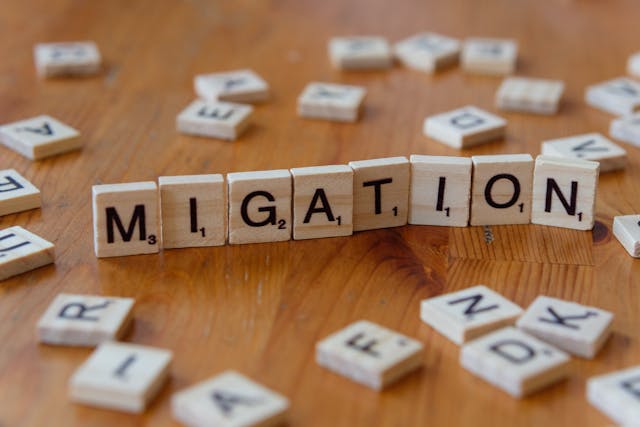
(Photo by Markus Winkler / pexels.com)
Twenty percent of immigrants to Canada leave the country within the first 25 years, and those holding doctorates are more than twice as likely to leave as those with high school or less, according to a new report from the Institute for Canadian Citizenship (ICC).
Immigrants who leave Canada primarily do so within five years of landing, according to the ICC’s Nov. 18 “Leaky Bucket” impact paper, which says Canada has experienced a particular outflow of high-skilled immigrants in fields such as business, finance, information technology, and engineering.
“Onward migration risk is greater among higher-skilled immigrants,” the report says. “Five years after landing, these individuals are more than twice as likely to leave Canada as lower-skilled immigrants. The trend makes immigrants’ early years in Canada ”critical for retention.
”The report projects that more than 20,000 of the 380,000 individuals expected to get permanent residency next year will depart the country permanently by 2031, drawing on decades of data from Statistics Canada to reach its outward migration conclusions. The study considers an immigrant to have left Canada if a tax return hasn’t been filed for two consecutive years. The last tax year studied was 2022.
The paper has the most concern about high-skilled immigrants, noting that those with doctorates are three times as likely to leave if they don’t find favourable jobs or salaries in Canada. The highest onward migration occurs from the Atlantic provinces, according to the report, noting that Ontario and the Prairies have higher immigrant retention rates.
The annual rate of immigrants leaving Canada rose from 0.6 percent in 2018 to 0.9 percent in 2021. Immigrants “who planned to work as business and finance managers” had the highest overall onward migration rate, with 32 percent leaving over 25 years.
The report says Canada is losing immigrants from sectors that the federal government sees as areas of future economic growth, such as technology, engineering, and construction.
“Canada is losing immigrants in critical occupations across high-demand sectors,” the report says.
Recommendations
The ICC paper recommends tailoring immigration support to high-skilled immigrants by making it easier for their credentials to be recognized and providing incentives to stay.
The Carney government’s 2025 budget proposes a number of changes to immigration, including funding to attract high-skilled foreign workers, such as individuals currently in the United States on H-1B specialty occupation visas. It also sets aside up to $1.7 billion for a tri-agency accelerated research chairs initiative to recruit exceptional international researchers, part of a broader strategy to bring more than 1,000 researchers to Canada over the coming years.
The budget is based on 385,000 permanent residents arriving each year for the next three years, down from around 395,000 this year and around 500,000 in 2024. It also anticipates a cut to the number of temporary residents to 385,000 by next year and 370,000 by 2027, down from around 674,000 this year.
However, along with the cuts to permanent and temporary residents, the 2025 budget proposes a one-time special measure to grant permanent residency to 33,000 work permit holders already in Canada in 2026 and 2027, plus a $120-million program to automatically grant permanent residency to refugees during the period.
The objective stems from Carney’s commitment to increase the number of high-skilled immigrants while reducing non-permanent residents in Canada to 5 percent or less of the population by the end of 2027.
“There are signs the Carney government understands the benefits of an immigration policy that’s geared to attract the ‘best and brightest,” Jock Finlayson and Steven Globerman wrote on Nov. 7 for the Fraser Institute. “Encouragingly, the new immigration plan will expand the intake of ‘economic immigrants’ while slightly reducing the numbers admitted under the family and refugee/asylum claimant categories.” They called the strategy to attract more high-skilled foreign workers, H-1B holders, and top researchers a step in the right direction.
“The time is opportune for Canada to return to a more rigorous immigrant selection system that prioritizes education, in-demand skills, and ability to drive innovation and productivity,” Finlayson and Globerman wrote.
